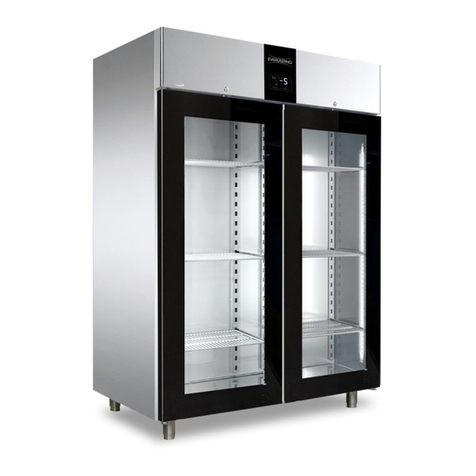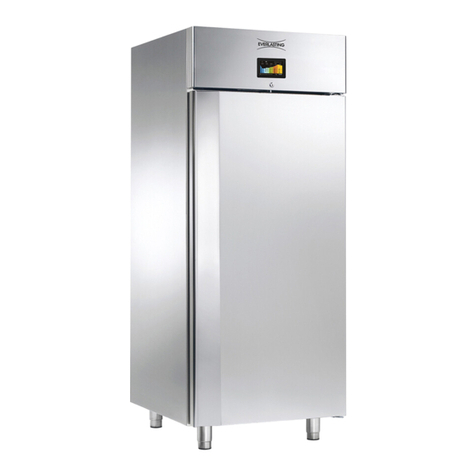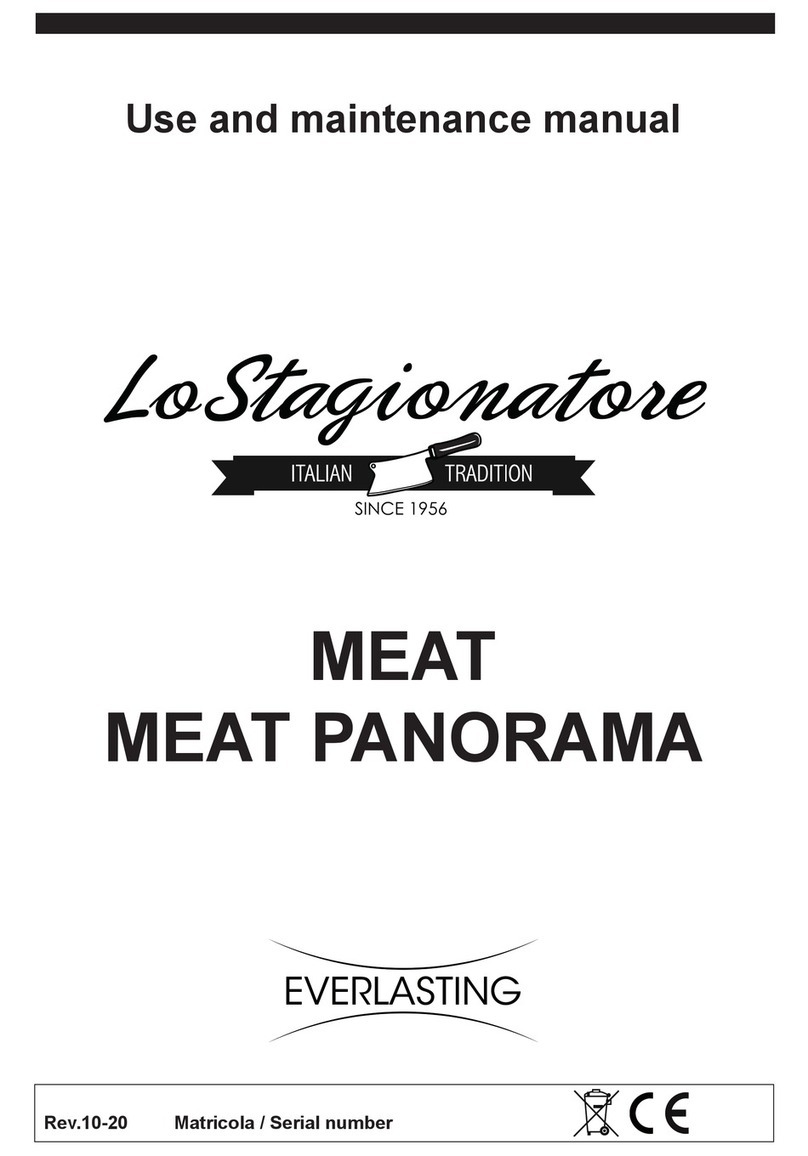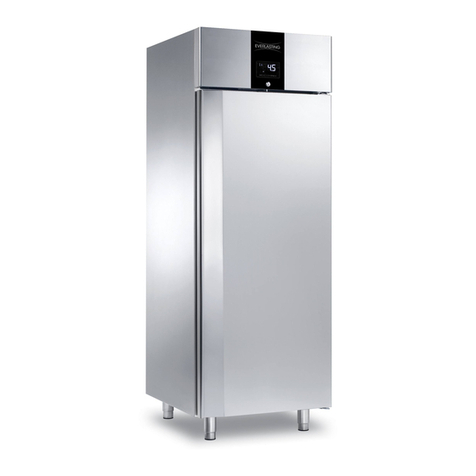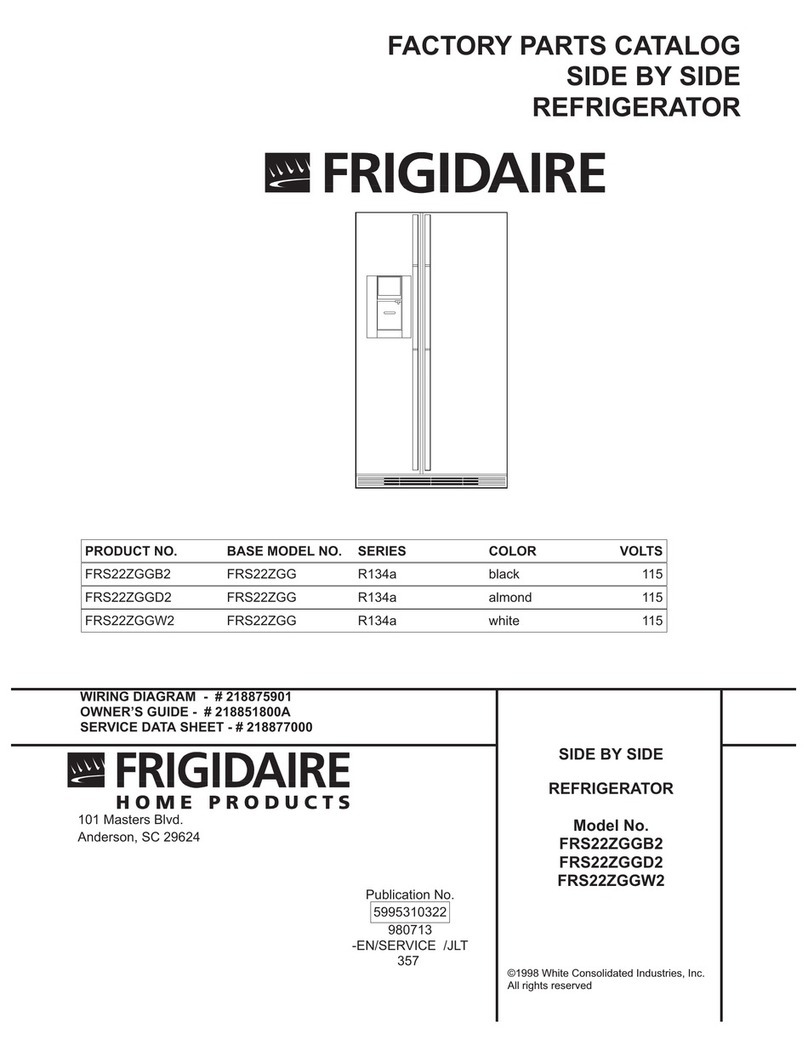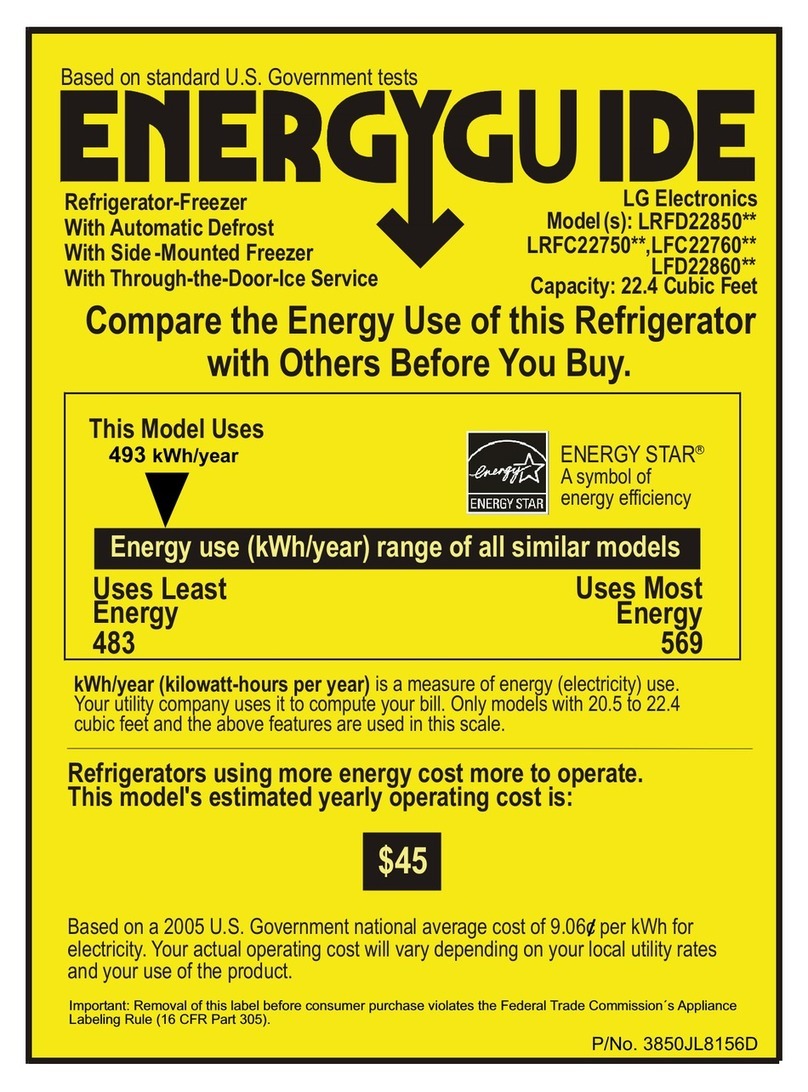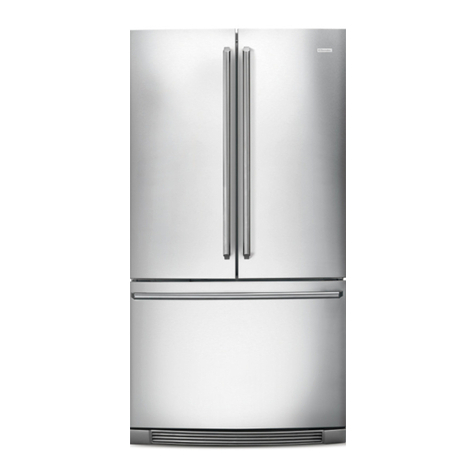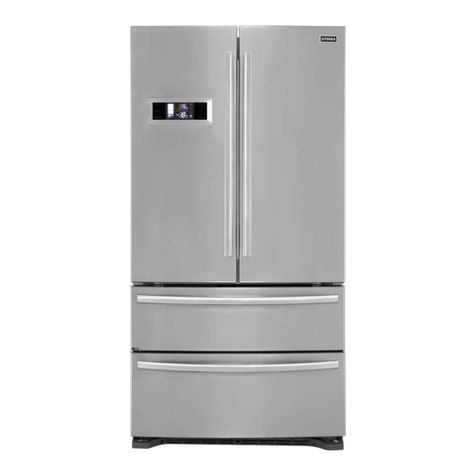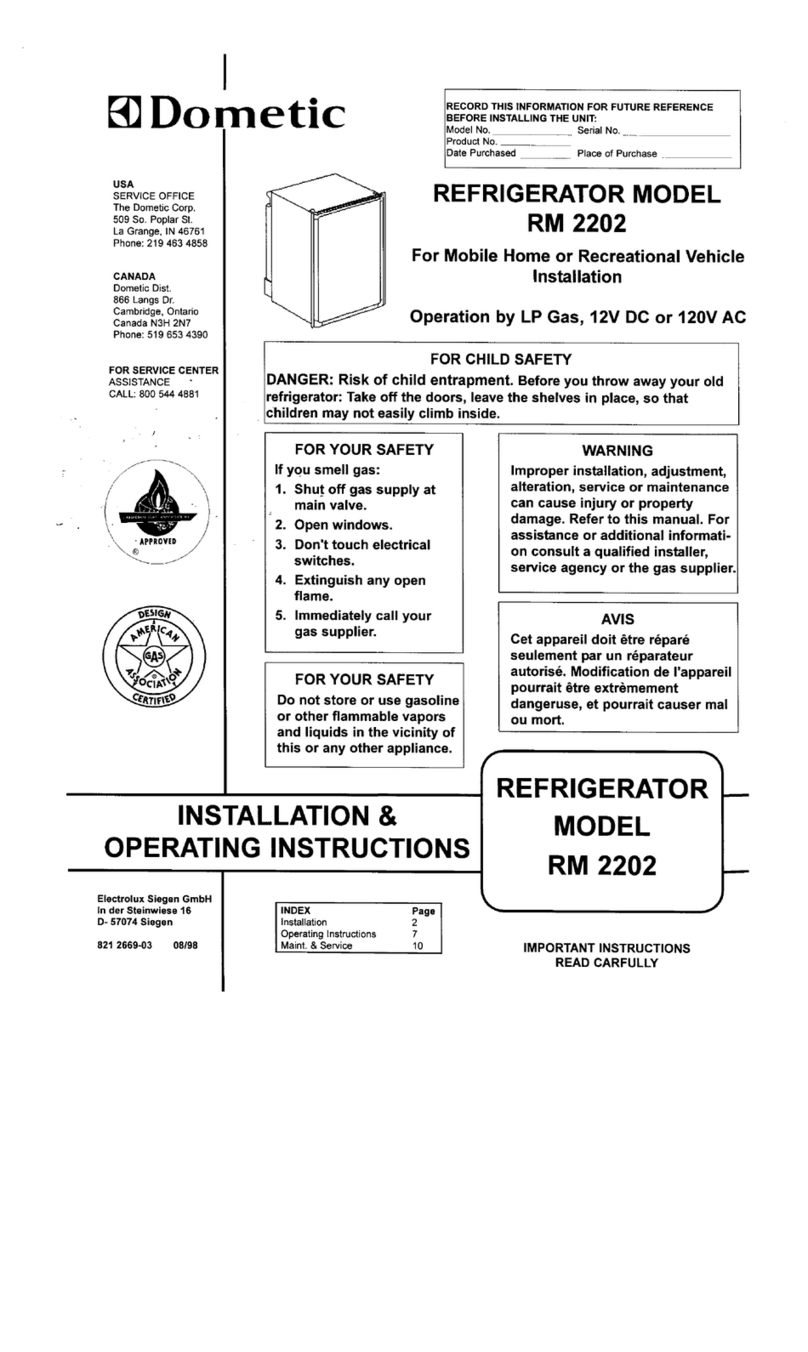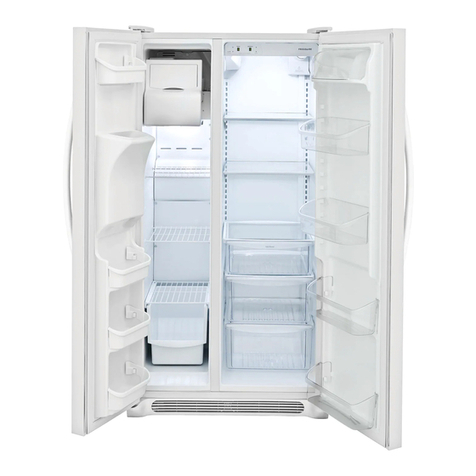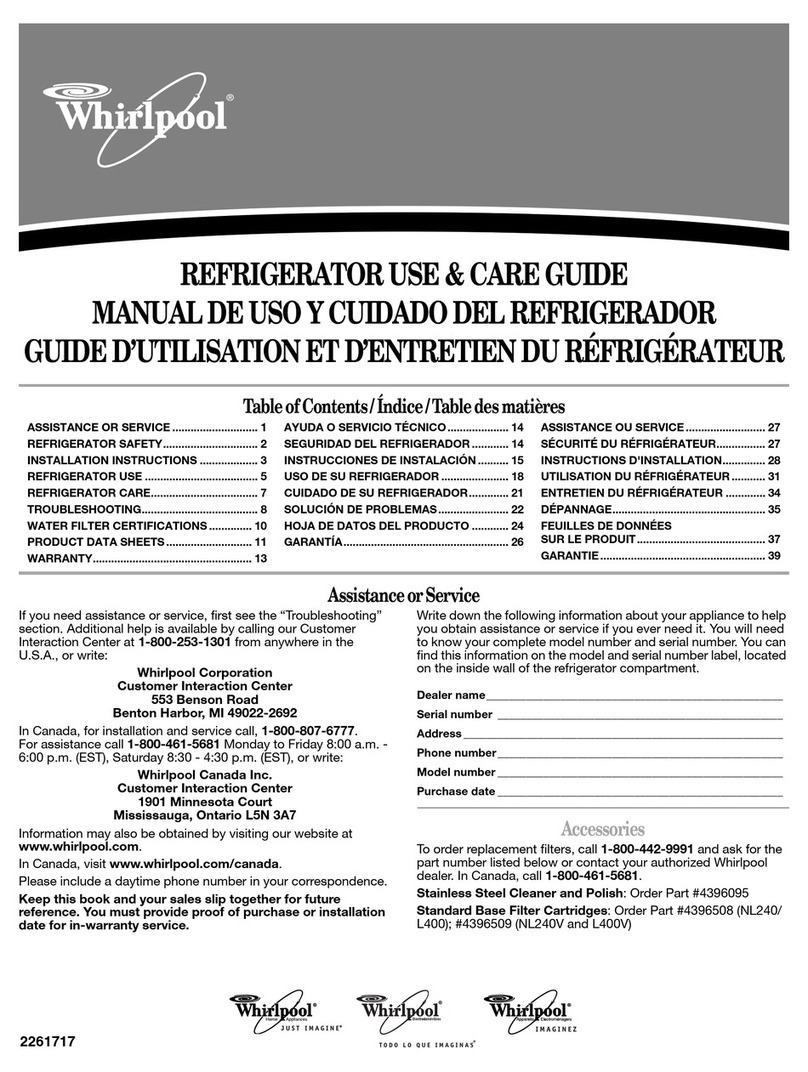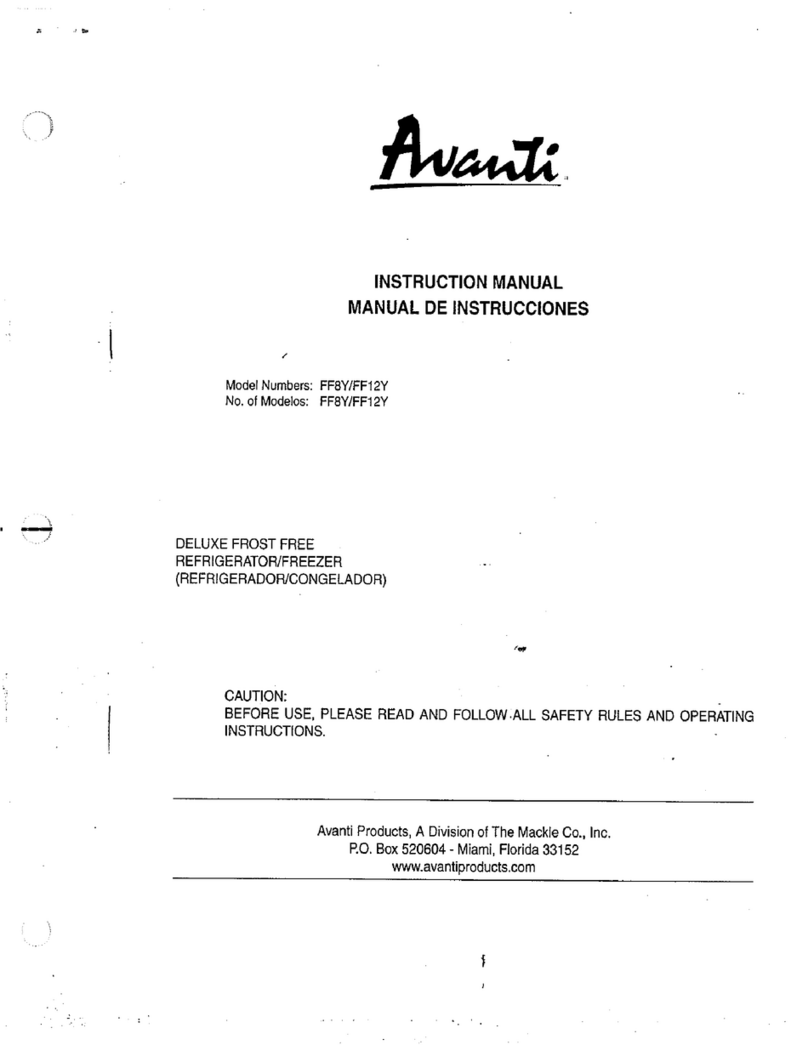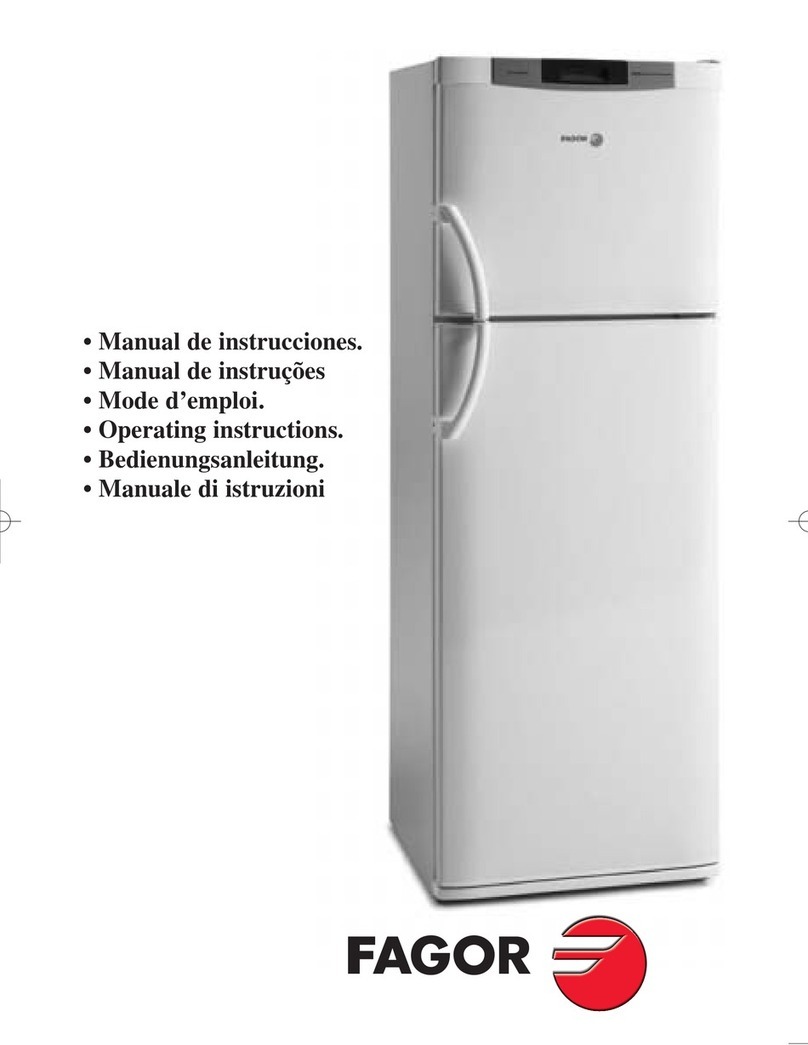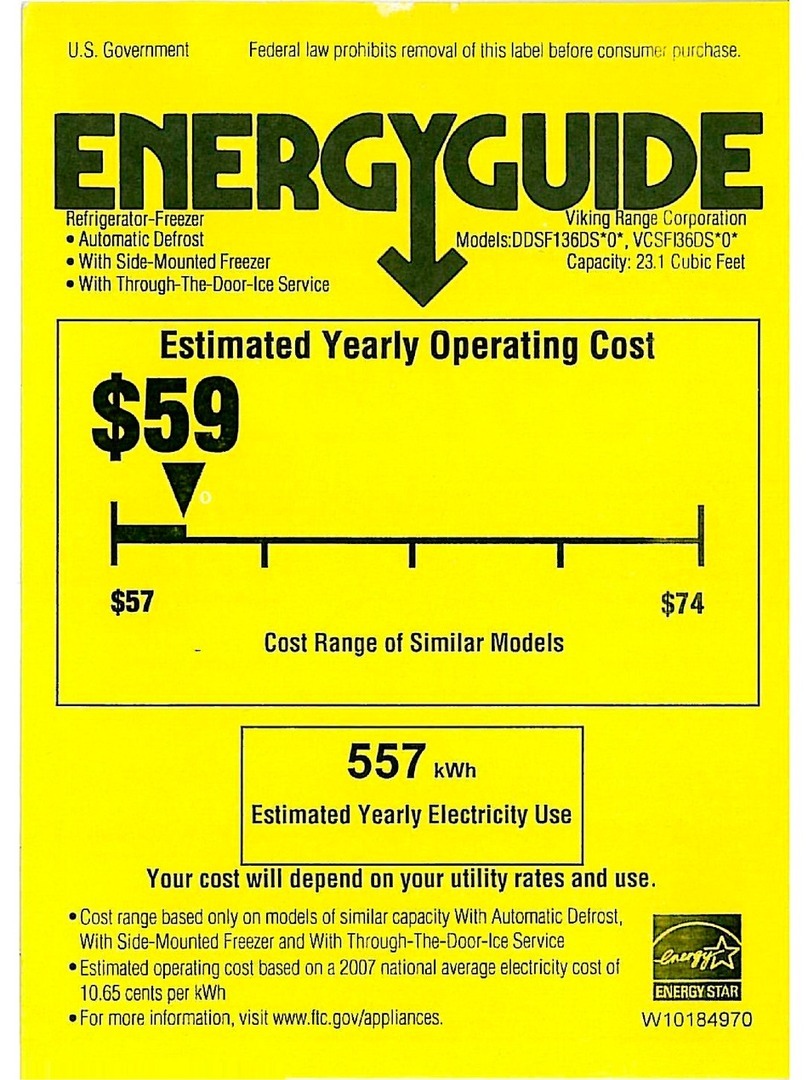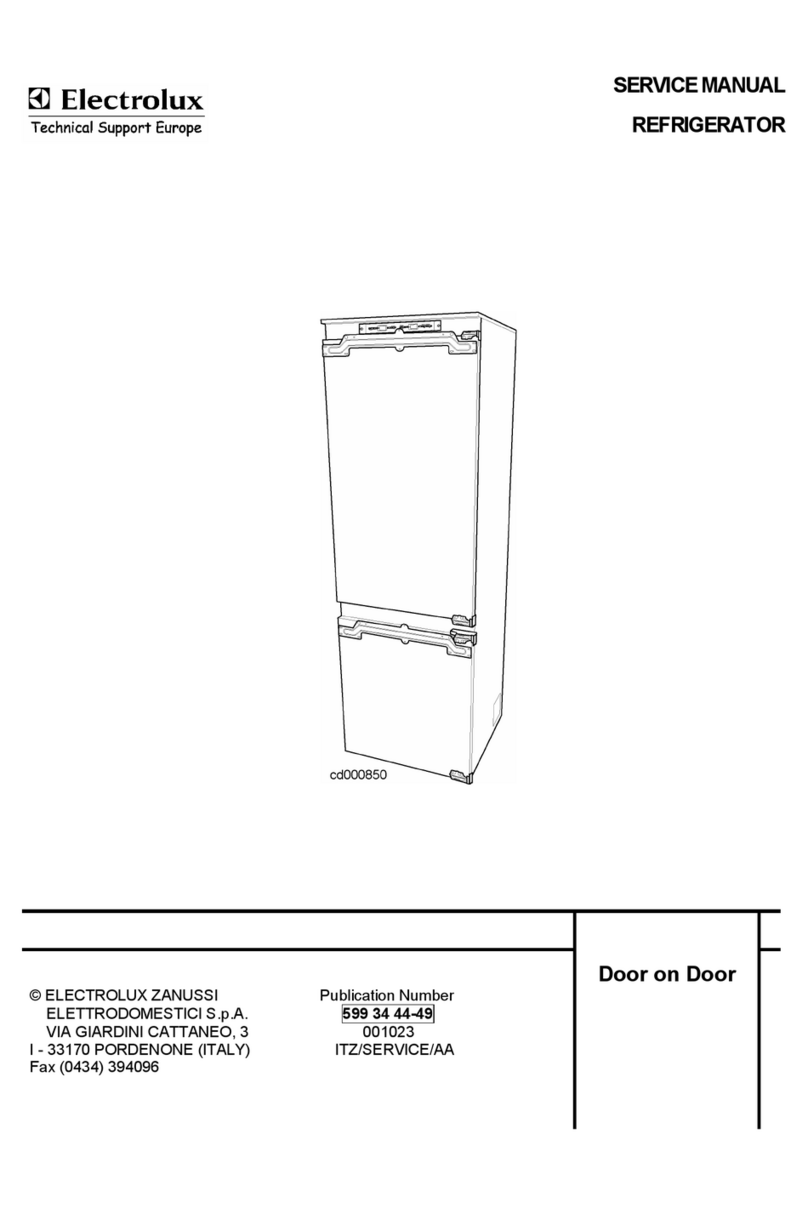
6
ENGLISH
CHAPTER 6 TROUBLESHOOTING
Problems may occur, in the blast chiller, identified as shown in the table:
TROUBLE DESCRIPTION POSSIBLE CAUSES HOW TO REPAIR IT
the blast chiller does not turn on no power supply check the plug, socket, fuses, line
other contact technical support
the refrigeration unit does not start the set temperature has been reached set new temperature
defrosting in progress wait until the end of cycle / turn power off
and on again
control panel failed contact technical support
other contact technical support
the refrigeration unit runs conti-
nuously but does not reach the set
temperature
location is too hot aerate more
condenser is dirty clean the condenser
insufficient coolant contact technical support
stop the condenser fan contact technical support
insufficient sealing of doors check the seals / provision of goods
evaporator completely frosted manual defrosting
other contact technical support
the refrigeration unit does not stop at
the set temperature
command panel failed contact technical support
temperature sensor ceiling failed contact technical support
block of ice on the evaporator
misuse see chapter 1.
defrost heater fault contact technical support
defrost probe damaged contact technical support
accumulation of water or ice in the
drip tray
drain clogged clean the pipette and the drain
blast chiller is not level check levelling
CHAPTER 7 INSTRUCTIONS FOR REQUESTING ASSISTANCE
For any technical problem and for intervention, assistance and spare-part requests it is necessary
to exclusively revert to one’s dealer, providing the code and the serial number indicated on the
specification label attached to the appliance.
CHAPTER 8 SAFETY AND ACCIDENT PREVENTION
The blast chiller has been built with suitable measures to ensure the safety and health of the user.
The following are the measures taken to protect against mechanical risks:
- stability: The blast chiller, even with the grilles removed, has been designed and built in such a way
that under the intended operating conditions, its stability is suitable for use without risk of overturning,
falling or unexpected movement
- surfaces, edges, corners: the accessible parts of the blast chiller are, within the limits allowed by
their functions, free of sharp angles and sharp edges, as well as rough surfaces likely to cause injury
- moving parts: were designed, constructed and arranged to avoid risks. Certain parts are equipped
with fixed guards so as to prevent risks of contact which may result in injury





















